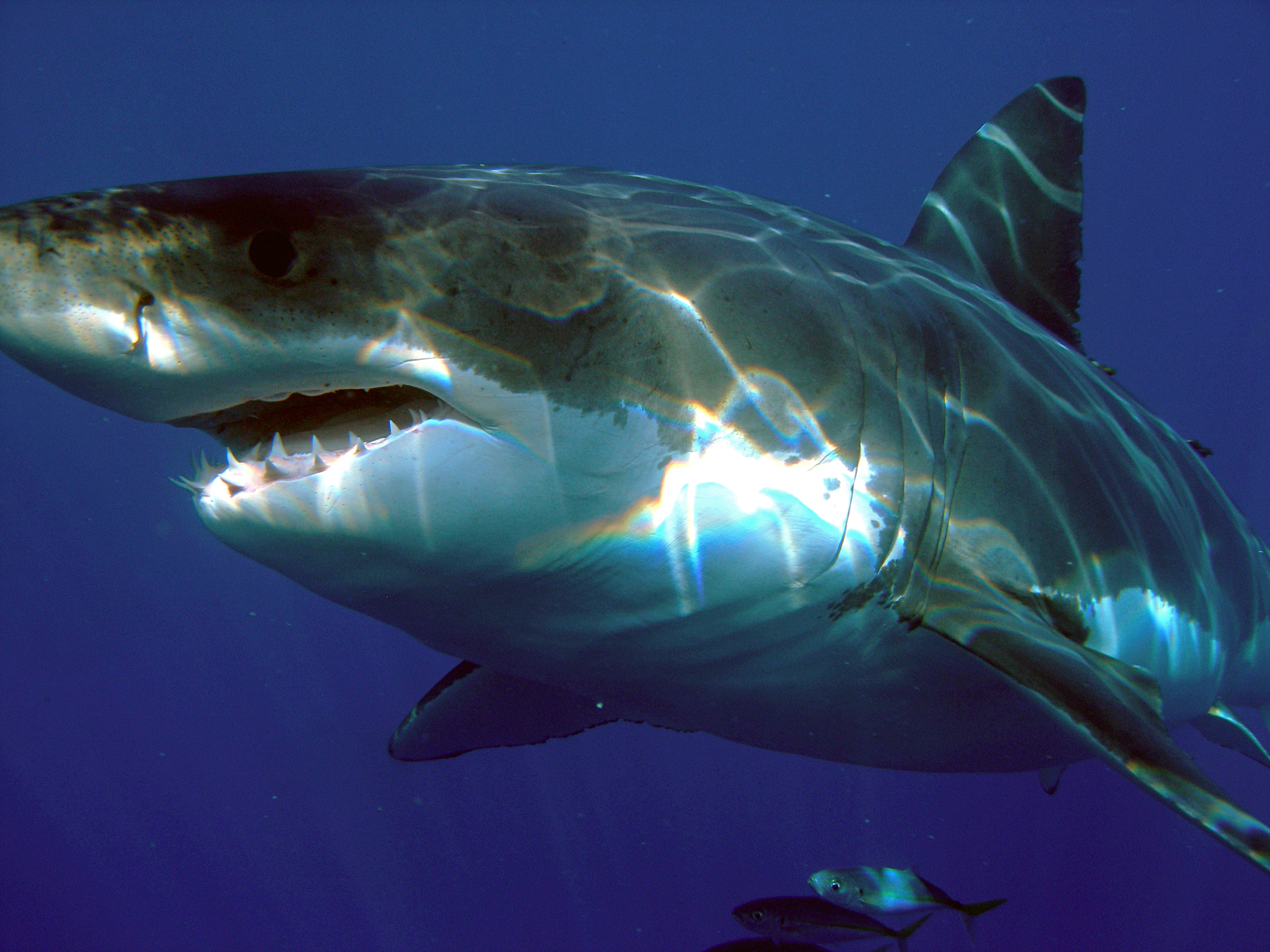
1. Great Whites are stealthy.
Step one to avoid being eaten by zombies – don’t let them see you in the first place! A great white shark would not compromise your cover by any means! Great white sharks employ a strategy of camouflage called countershading. They are dark gray on top with undertones of brown and blue, with a white bottom half. They use this two-toned look to their advantage in the ocean. From underneath, they are hard to spot, since the white makes their outline less distinguishable. From above, the darker shading provides a similar advantage. This would make it easier for them to roam undetected when searching for prey, and also to your average zombie.

2. They could easily out-swim a zombie.
Despite the mythical status of zombies, they are still bound by the fact they have human musculature. So, even if the olympic swimmers all became zombies and came after you, a great white would still be able get you out of trouble. If you consider the numbers, it becomes incredibly clear.
The record for fastest swimming by a human is 2.29 meters per second, which translates to 5.12 mph. On the other hand, a great white shark has the ability to swim up to 25 mph! Though neither species could maintain this speed over time, having a shark would be able to get you well out of the way and to safety.

3. Great Whites would make a reliable getaway vehicle.
When a zombie apocalypse hits, you’d need an easy way to travel between destinations. Though my first choice would be a car in an ideal world, once the apocalypse has occurred, I highly doubt it would be easy to come across gas. Therefore, having a shark on your team would offer you the ability to travel along the coast without zombies attacking you once your gas tank is empty, because sharks have their own special type of fuel.
Their special fuel is actually found in their liver, which is the largest organ in a shark’s body. To give you perspective on the size of their liver, a human liver is on average 3.2-3.7 pounds, has two main lobes, and could be held in your hands. It’s a bit larger than a softball and more elongated. If an average man over 20 years of age weighs 195 pounds, his liver would then be 1.6-1.9% of his body. Sharks, however, have livers that are about 30% of their body weight, meaning that they can be up to 1,000 pounds, and the size of a person!
Why, you may ask? The livers are multi-purpose. The livers are extremely dense, packed with fatty oils that help them to achieve more neutral buoyancy for long migrations of thousands of miles, along with providing an energy reserve they can burn if food is scarce. Therefore, the shark on your zombie apocalypse team would make an awesome method of transport, since sharks travel thousands of miles a year!
4. Great Whites would be skull crushing machines
There simply isn’t much of a comparison when it comes to your average person versus your average great white. In the many zombie films and television shows out there, they show that the best way to kill a zombie is to go for its brain. Therefore, to get to a brain, you must first crack the skull, which takes approximately 200 pounds of force.
Skulls are a relatively strong bone, and for a human zombie killer, it takes a pretty strong hit. But for great whites, it would be the equivalent of a light pinch. In 2008, a study was conducted to answer just that question, and found that a 20-foot shark can bite with over 4,000 pounds of force! That’s twenty times of the amount needed to crack a skull!

Resources:
Cotran, Ramzi S.; Kumar, Vinay; Fausto, Nelson; Nelso Fausto; Robbins, Stanley L.; Abbas, Abul K. (2005). Robbins and Cotran pathologic basis of disease(7th ed.). St. Louis, MO: Elsevier Saunders. p. 878.ISBN 0-7216-0187-1.
Speer, Glenn. Guinness Book of World Records 1998. Connecticut: Guinness, 1997: 265.
Wroe, S.; Huber, D. R. ; Lowry, M. ; McHenry, C. ; Moreno, K. ; Clausen, P. ; Ferrara, T. L. ; Cunningham, E. ; Dean, M. N. ; Summers, A. P. (2008). “Three-dimensional computer analysis of white shark jaw mechanics: how hard can a great white bite?”. Journal of Zoology 276 (4): 336–342. doi:10.1111/j.1469-7998.2008.00494.x.
